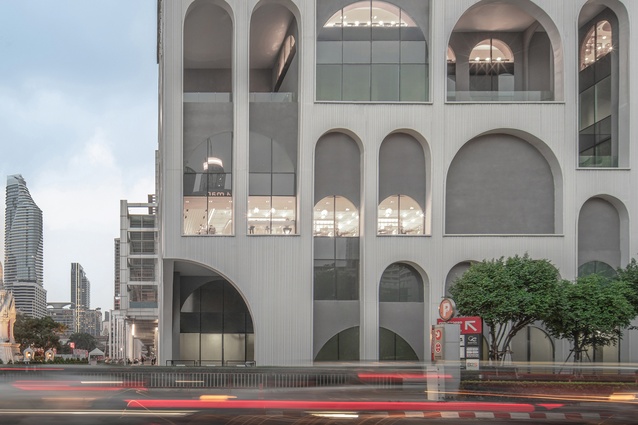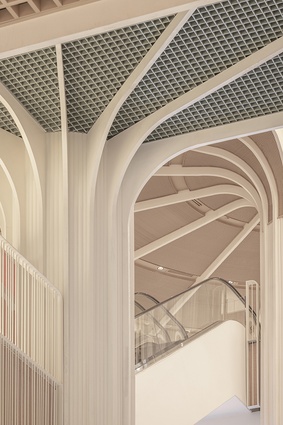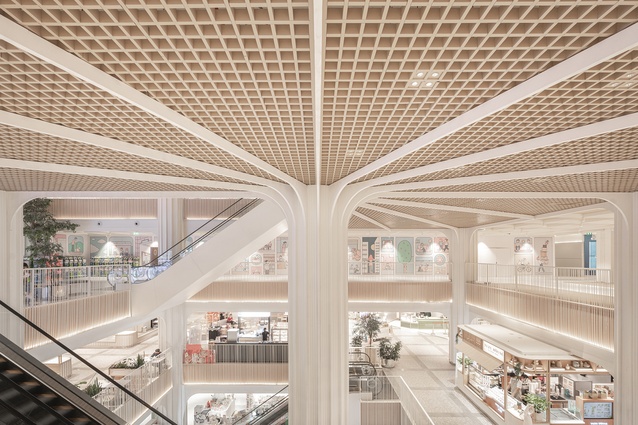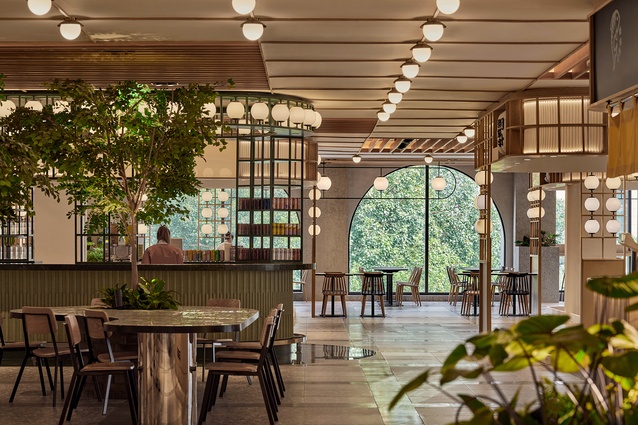Finding peace in the chaos
Linehouse, co-founded by New Zealand expat Briar Hickling, has transformed the façade and seven floors of CentralWorld in Bangkok.
“CentralWorld is a renovation project. The design brings new life to a once uninspiring façade and interior. Rather than demolishing the existing building structure and shell, the design works with the existing, reducing its carbon footprint. Many shopping centres lack a sense of place and identity within their locality. This project responds to the surrounding context, offering a moment of respite in a dense urban district,” says Hickling.
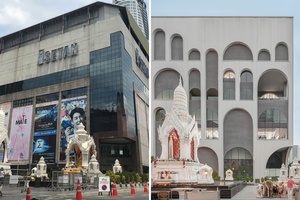
The design conceptually explores contradictions between the chaotic and peaceful nature of Bangkok. Located in an area once abundant in lily pads; Linehouse examined the circular profile of the lily pads, translating this into a spatial narrative of the exterior and interior condition. The result is a building that responds to its locality in form and materiality.
The project is nestled in the urban heart of Bangkok, surrounded by Hindu temples. The design concept seeks to embody this sentiment of finding peace in the chaos. The façade utilizes an urban palette of concrete and dark cement render, whilst the rhythmic form of the overlapping arches aims to provide a sense of harmony.
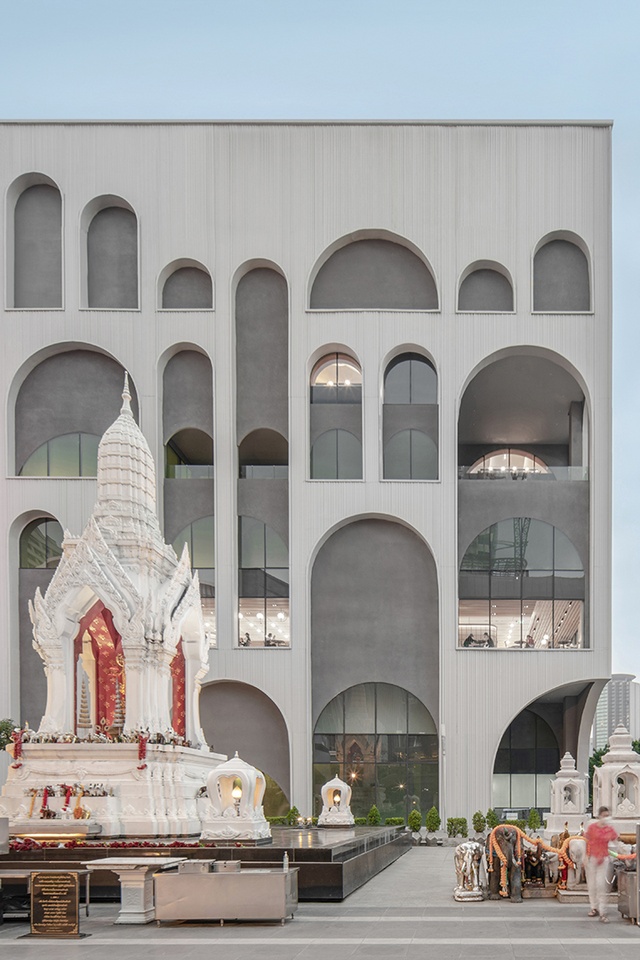
The design of the exterior is a double-layered arched façade; the front layer is defined by concrete formwork and the back layer rendered in black. The arches stem in various heights and widths shifting on the two planes, creating interesting intersections which operate as framed views through to the interior. Linehouse punctuated the arches in moments to allow for green terraces on the food and beverage floors. Providing a depth to an otherwise flat elevation and blurring the exterior-interior condition.

Upon entering the interior, white branched columns extend vertically through the atrium space, radiating out to create ceiling canopies. The void shifts through the seven floors, allowing for an overlapping and shifting ceiling plane. As one ascends, the ceiling plane treatment shifts in materiality; beginning with tech-tonic green metal grids, evolving to natural and tactile textures; timber trellis and woven cane ceilings. Creating a sense of movement from new to old-world craft.
A food hall occupies the fourth floor of the building, and the arched windows of the exterior façade frame views to the park beyond. A paired back palette of natural materials and tactile textures; timber, stone, and earthy materials in off whites further echo the peaceful nature of the interior.
Reflecting on her work across New Zealand and Asia, Hicking says, “Working locally here in New Zealand and internationally with a focus on Asia allows me to maintain a global perspective. The exposure to different cultures and evolving design in the retail, hospitality and hotel sectors, provides me with a progressive outlook for what the future could hold on home soil.”

